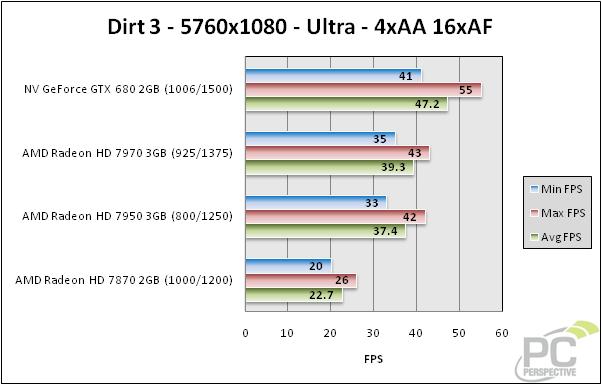NVIDIA Surround Technology and Testing
As we mentioned on the first page, NVIDIA has finally moved up in the world by deciding to offer support for more than two displays on a single card. AMD has had its Eyefinity technology integrated since the Evergreen line of GPUs released in September of 2009 and it has taken 2+ years for NVIDIA to catch up. With Kepler, the GTX 680 will now natively support 4 displays on a single card.
Three of those displays can be combined into an NVIDIA Surround configuration for triple monitor gaming while a 4th video output can be used as an accessory display for email, etc.
The new desktop management software offers features like the ability to center your task bar on a single monitor (yay!), and to maximize a window to a single display as well. These are features that AMD introduced into its drivers with the release of the 12.2 Catalyst version.
Something called "Surround Bezel Peeking" allows a gamer to quickly switch between bezel corrected and non-bezel corrected resolutions in a NVIDIA Surround configuration while in game. The benefit here is that with some games, menus and options can be hidden behind the bezel when correction is enabled. By using this toggle users will be able to select their menu option and then switch back (to a corrected bezel) to continue playing.
Now that we finally have the ability to run an NVIDIA Surround gaming configuration on a single card with no caveats, it is high time we compared it to the current lineup of AMD cards capable of doing the same thing. I ran a handful of games at 5760×1080 on the new GeForce GTX 680 as well as the Radeon HD 7970, HD 7950 and HD 7850 cards.
The new GTX 680 runs right in line with the HD 7970 and HD 7950 which interestingly do not vary in performance. The Radeon HD 7870 falls behind about 47%.
The NVIDIA card is a bit slower than both the HD 7970 and HD 7950.
The GTX 680 completely dominates the multi-display gaming performance in Dirt 3, besting the HD 7970 3GB card by 20%.
Skyrim has to be hacked a bit to get triple panel working correctly, but when we did, the new GTX 680 was easily the fastest option.
Oh, and it’s gorgeous.
1.2 MB screenshot




















The reason for frame rate
The reason for frame rate capping is to lower the temps of the card. Which also reduces the fanspeed automatically and consuming less power overall.
It works, I tried it in Battlefield 3 with my two GTX 580’s in SLI. Normally I get about 100 FPS on Ultra, gpu’s at 82C max. With a FPS cap of 80 FPS, I drop temps down to 70’s. 10 degree savings and quieter operation.
Txaa is best filter
Txaa is best filter